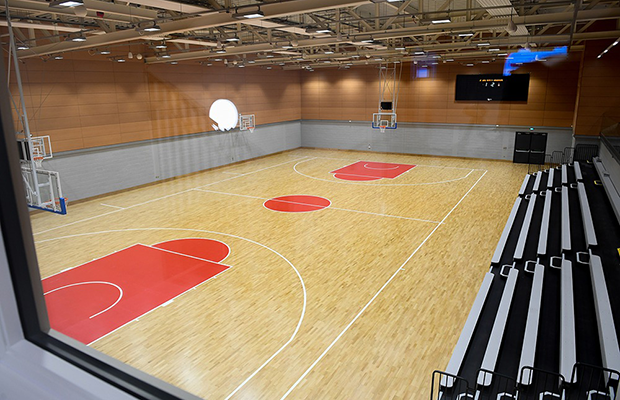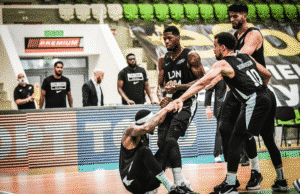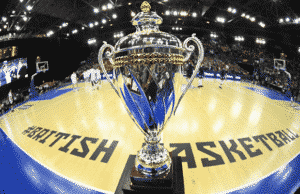Non-elite basketball aims for January return following Commons vote

Basketball in England is preparing for a return to indoor training and competitive basketball across certain government tiers following a House of Commons vote last night.
Whilst the BBL, WBBL, NBL D1 and WNBL D1 have continued through the COVID-19 lockdown under an elite sport exemption, junior basketball league competitions are aiming to return at the end of January or start of February, whilst the governing body is urging all local league partners to consider a January restart for their junior 5×5 leagues and 3×3 senior leagues, whilst the EABL/WEABL/ABL will restart in January 2021.
Numerous barriers still remain, with what basketball is permitted varying dependent on the tier each area is in – any area in tier 3, the highest risk level, will not see any non-elite competition be allowed, for example- along with travel restrictions, plus venue access with some leisure and training facilities remaining closed.
Meanwhile, Basketball England have created a six-week return to training programme for club to ensure there isn’t an overloading of players and subsequent spike in injury rates.
“While it is clear strict rules apply in tier-three areas, it is disappointing and frustrating, that after submitting of a set of protocols for adult non-elite basketball to return safely in tier one and two areas, that it has not been possible in the manner we would have wished,” Stewart Kellett, Basketball England CEO said.
Additionally, spectators are now allowed at ‘Elite’ indoor sporting events and fixtures in Tier 1 and 2 areas; a maximum of 1,000 supporters or 50% of the venue’s capacity – whichever is lower.
The breakdown of what is allowed in each tier of area is as follows:
Tier 1 areas – Medium
- Elite competition and training – BBL, WBBL, NBL Division One, WNBL Division One, EABL, WEABL (RTP Level 2). Elite level is defined by government and detailed in Appendix 5 of the RTP document here.
- Non-elite senior training and competition in bubbles of up to six people (RTP Level 2 but with six-person limit)
- Junior competition and training – Jnr. NBL and local leagues for U18s and younger (RTP Level 2).
- Educationally-based competition and training – Schools, Colleges (AoC Sport, ABL) for U18 players. For players over 18, Non-elite rules apply.
Tier 2 areas - High
- Elite competition and training – BBL, WBBL, NBL Division One, WNBL Division One, EABL, WEABL (RTP Level 2). Elite level is defined by government and detailed in Appendix 5 of the RTP document here.
- Non-elite senior can only train indoors with members of their households or support bubbles. No competition is permitted
- Junior competition and training – Jnr. NBL and local league for U18s and younger (RTP Level 2).
- Educationally-based competition and training – Schools, Colleges (AoC Sport, ABL) for U18 players. For players over 18, Non-Elite rules apply.
Tier 3 areas – Very High
- Elite competition and training – BBL, WBBL, NBL Division One, WNBL Division One, EABL, WEABL (RTP Level 2). Elite level is defined by government and detailed in Appendix 5 of the RTP document here.
- Non-elite senior can only train indoors with members of their households or support bubbles. No competition is permitted
- Junior training – Jnr. NBL and local league for U18s and younger (RTP Level 2). No competition is permitted.
- Educationally-based training – Schools, colleges (AoC Sport, ABL) for U18 players. For players over 18, Non-elite rules apply. No competitions permitted.
Additionally, another change sees players who turn 18 during the season now able to continue playing in U18 teams and competitions.
Stewart Kellett, Basketball England CEO added:
“We have engaged in prolonged discussions with the DCMS and Sport England following the Government’s announcement of the return to the three-tier system last week.
“It is positive news that our junior players can return to training under varying conditions, that some competition will be permitted and that spectators can return at elite fixtures. But we feel large sections of the basketball community, along with other indoor sports, have been treated in a detrimental and disproportionate way.
“We will continue to engage with DCMS on this matter and we hope that a return to the court across the whole sport will be possible in the new year.
“We thank the basketball community for their patience while these discussions have been taking place and while the Government’s decision was ratified by Tuesday’s vote in the House of Commons.
“Before this point, we simply could not be certain about the Return To Play guidance to help the game move forward. We will continue our dialogue with the DCMS to find the best way forward for the whole of the sport.”






0 comments